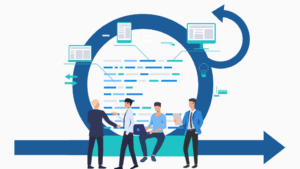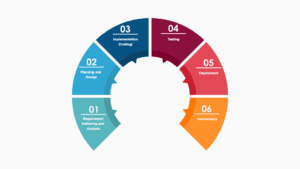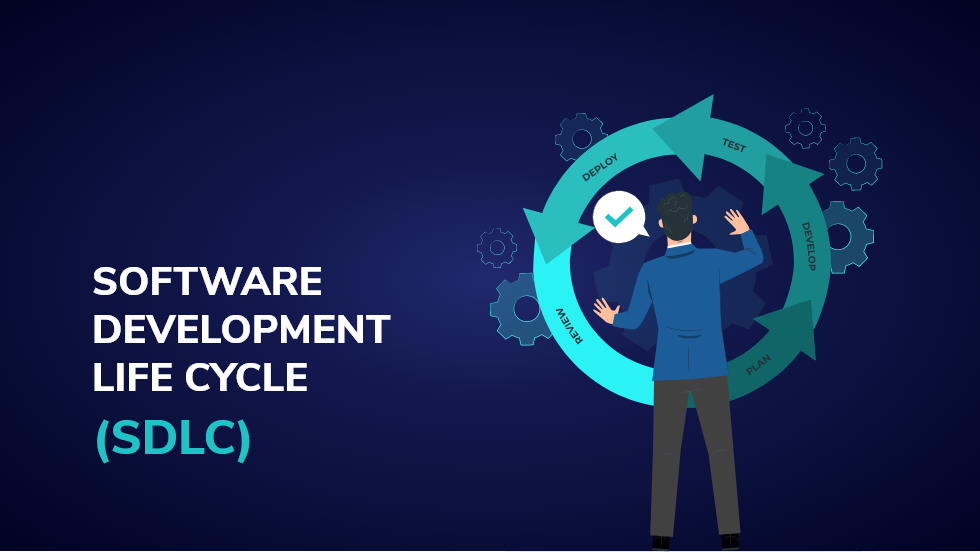In the fast-paced world of software development, having a structured and systematic approach is crucial for delivering high-quality software that meets user requirements and business objectives. This is where the Software Development Life Cycle (SDLC) comes into play.
SDLC is a well-defined process that guides software development from inception to deployment and maintenance. In this comprehensive guide, we will delve into the intricacies of the SDLC, its phases, benefits, challenges, best practices, and how to choose the suitable SDLC model for your projects.
What is the SDLC, and why is it essential for software development?

The Software Development Life Cycle (SDLC) is a framework that outlines the steps involved in creating, maintaining, and enhancing software applications. It provides a structured approach to ensure the software is reliable, efficient, and meets the specified requirements. By following a defined SDLC, development teams can streamline the development process, reduce risks, and improve overall software quality.
The goals and benefits of implementing SDLC in projects
The primary goal of SDLC is to deliver a high-quality software product that satisfies user needs and aligns with business objectives. Implementing SDLC brings several benefits, including improved project management and organization, enhanced communication among team members, minimized risks, and increased predictability in project outcomes.
Common SDLC models and their differences

Various SDLC models exist and have their own unique approach to software development. For instance, the Waterfall model follows a linear sequential process, while Agile methodologies promote iterative and incremental development. Other models, like the Spiral model, combine elements of both Waterfall and iterative approaches. The suitable SDLC model depends on the project’s characteristics and requirements.
Waterfall Model:
The Waterfall model is one of the oldest and most straightforward SDLC models. It follows a sequential and linear approach, where each phase must be completed before moving on to the next one. The phases of the Waterfall model include requirements gathering, design, implementation, testing, deployment, and maintenance. Once a phase is completed, it is challenging to revisit and make changes without going back to the beginning. While the Waterfall model provides a clear structure and is suitable for projects with well-defined requirements, it can be less flexible when dealing with changing customer needs.
Agile Model:
Agile methodologies have gained immense popularity due to their adaptability and focus on customer collaboration. Unlike the Waterfall model, Agile embraces change and incorporates customer feedback throughout the development process. Agile involves dividing the project into small, manageable iterations called sprints, typically lasting one to four weeks. The development team works collaboratively to deliver working software at the end of each sprint. Agile models, such as Scrum and Kanban, are well-suited for projects with evolving requirements and dynamic environments. They promote frequent customer interactions, continuous improvement, and early delivery of value.
Iterative Model:
The Iterative model is an extension of the Waterfall model but with more flexibility. It allows for incremental development, meaning that each phase goes through multiple iterations until the desired level of quality is achieved. Developers receive feedback from stakeholders after each iteration, leading to continuous refinement of the software. The Iterative model is beneficial when requirements are not fully understood at the beginning of the project or when there is a need for progressive enhancements.
Spiral Model:
The Spiral model combines elements of both the Waterfall and Iterative models, making it suitable for large and complex projects with high-risk factors. It involves cyclic repetition, where each cycle starts with planning and risk assessment, followed by development, testing, and customer evaluation. The Spiral model emphasizes risk management and allows for considerable flexibility during development. It is often used in projects with rapidly changing requirements or where safety and reliability are of utmost importance.
Choosing the Right SDLC Model for Your Project:
1. Factors to consider when selecting an SDLC model:
Project complexity, size, budget, and stakeholder preferences are crucial in choosing the appropriate SDLC model. Understanding project specifics enables better alignment between the project requirements and the chosen model.
2. Evaluating project complexity and team capabilities:
An honest assessment of the project’s complexity and the team’s expertise will guide the selection of the most suitable SDLC model. Adapting the SDLC model to the project’s specific needs is crucial for success.
3. Case studies of successful projects with different SDLC models:
Examining real-world examples of projects using different SDLC models can provide valuable insights into their strengths and weaknesses. Learning from other projects’ experiences helps in making informed decisions.
Phases of the Software Development Life Cycle

1. Requirement Gathering and Analysis:
The development team works closely with stakeholders in this phase to identify, document, and prioritize project requirements. Understanding the needs of end-users and business objectives is critical to defining a clear scope for the project.
2. Planning and Design:
The planning phase involves creating a project plan, allocating resources, and setting up the development environment. The software architecture and system components are carefully planned during the design stage, and technical specifications are defined.
3. Implementation (Coding):
This phase involves the actual development of the software based on the design specifications. Developers write high-quality code and adhere to coding standards to ensure consistency and maintainability. Frequent code reviews and unit testing are conducted to identify and fix issues early.
4. Testing:
Quality assurance is a vital part of SDLC. Software undergoes various testing levels, including unit testing, integration testing, system testing, and user acceptance testing, to ensure it functions correctly and meets the requirements.
5. Deployment:
Once the software has passed testing and is deemed ready for production, it is deployed to the live environment. Proper deployment strategies and continuous monitoring ensure a smooth transition from development to the production environment.
6. Maintenance:
After deployment, the software enters the maintenance phase. During this period, developers address any issues users report, apply bug fixes, and perform updates to enhance the software’s performance and security.
Advantages of Implementing SDLC:
The advantages of implementing the SDLC go beyond making the management of the project easier. Here are some other advantages:
1. Improved project management and organization:
SDLC provides a clear roadmap, making planning, executing, and monitoring projects effectively easier. This leads to improved project management and overall organization within the development team.
2. Enhanced communication and collaboration among team members:
A structured SDLC fosters better communication and cooperation among developers, testers, and stakeholders, leading to a more cohesive team. Collaborative efforts often result in better outcomes and higher team satisfaction.
3. Minimized risks and increased predictability in project outcomes:
By identifying and addressing potential issues early in the development process, SDLC reduces project risks and improves the predictability of project outcomes. This helps in ensuring projects are completed on time and within budget.
4. Better software quality and customer satisfaction:
A well-implemented SDLC ensures that the software meets the specified requirements, resulting in a higher-quality product that satisfies end-users and stakeholders. Satisfied customers lead to stronger relationships and positive referrals.
Challenges in the Software Development Life Cycle:
Each SDLC phase presents its own challenges, such as incomplete or changing requirements, communication gaps, and time constraints. Addressing these challenges effectively is essential for successful software development.
Strategies to overcome these challenges effectively:
Open and transparent communication, continuous feedback, and regular project reviews can help address challenges and ensure a smooth development process. Addressing challenges head-on fosters team growth and prevents potential roadblocks.
Best Practices for Successful SDLC Implementation:
1. Involving stakeholders and users throughout the process:
Engaging stakeholders and end-users throughout the SDLC ensures that their feedback and requirements are considered at every stage. Regular communication and feedback loops enable adjustments and improvements.
2. Regularly reviewing and updating the project plan:
SDLC is a dynamic process, and project plans may need adjustments as the project progresses. Regularly reviewing and updating the plan keeps the development on track and enables timely adjustments to changing requirements.
3. Utilizing tools and technologies to streamline the SDLC:
Project management tools, version control systems, and collaboration platforms can streamline development and improve productivity. Leveraging technology helps in automating repetitive tasks and reducing human errors.
4. Emphasizing documentation and knowledge transfer:
Comprehensive documentation aids in knowledge sharing, making it easier for team members to understand and maintain the software. This is particularly valuable during the maintenance phase when new team members join, or upgrades are required.
Conclusion
In conclusion, the Software Development Life Cycle (SDLC) is the backbone of successful software development projects. By understanding the various phases, advantages, challenges, and best practices associated with SDLC, development teams can ensure the delivery of high-quality software that meets user needs and business objectives.
Choosing the suitable SDLC model based on project requirements and team capabilities further enhances the chances of project success. Embracing SDLC and continually improving its implementation contribute to the ever-evolving world of software development. Regardless of the chosen SDLC model, the focus on collaboration, continuous improvement, and customer satisfaction remains paramount for achieving excellence in software development.
